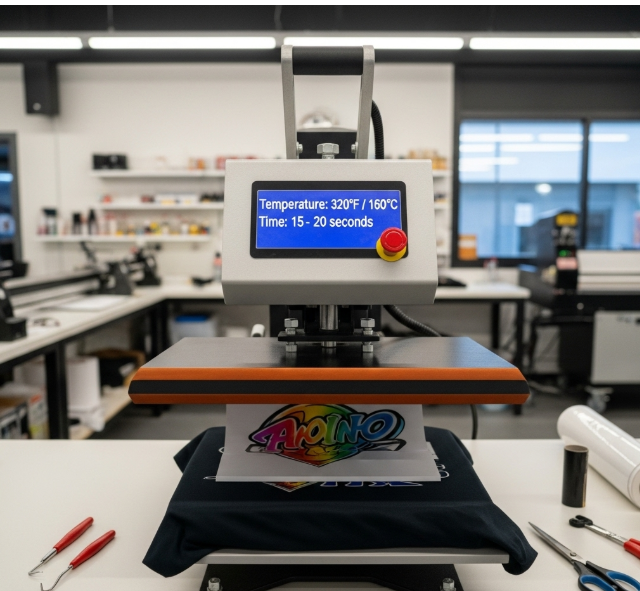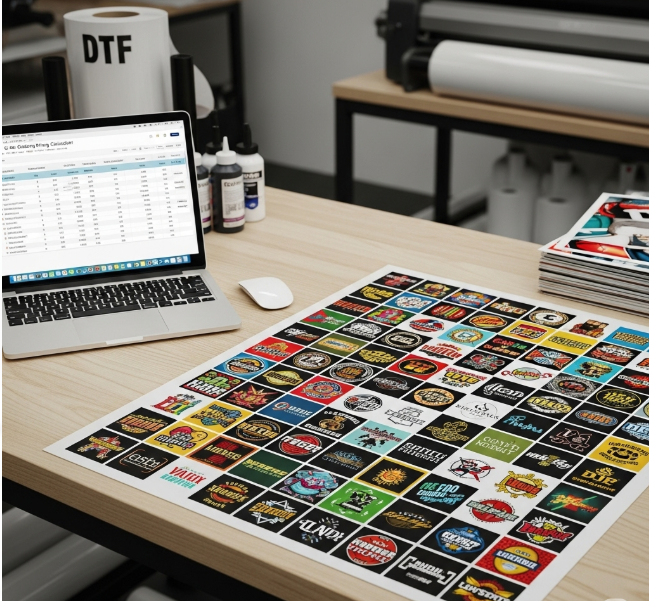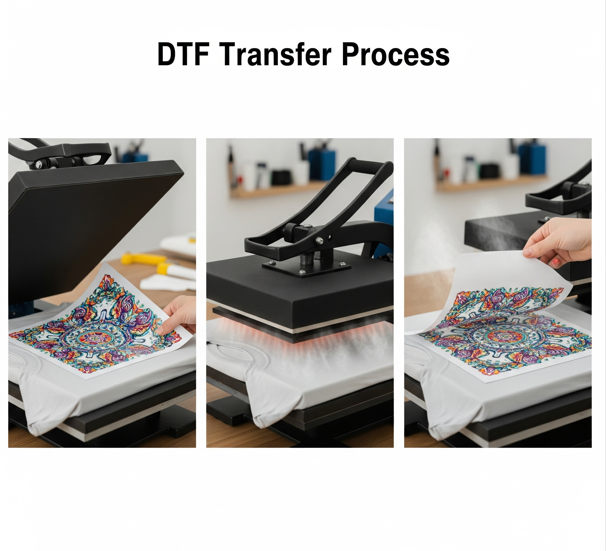
DTF Transfer Heat Press Settings
DTF Transfer Heat Press Settings – Complete Guide
DTF (Direct to Film) transfers are widely known for their vibrant colors and long-lasting prints. However, to achieve flawless results, your heat press settings must be precise and consistent. Incorrect temperature, time, or pressure can easily lead to issues such as faded colors, wrinkling, or poor adhesion, which will affect the overall quality of your prints. This guide will walk you through the best DTF transfer heat press settings step-by-step, ensuring professional results every time.
What Is a DTF Transfer?
In the DTF printing process, your design is first printed onto a special PET film. This film is then coated with adhesive powder and carefully cured. The final step involves applying the transfer onto the garment using a heat press machine. These machines, as explained on Wikipedia – Heat Press, deliver consistent temperature, time, and pressure, which are all essential for a proper and durable transfer. Also, understanding this process helps you control every stage of the printing to avoid common mistakes.
Essential DTF Transfer Heat Press
There are three key factors that you must control during the heat press process:
-
Temperature
-
Time
-
Pressure
Here is a quick reference table for standard cotton and polyester fabrics:
| Setting | Recommended Value | Notes |
|---|---|---|
| Temperature | 150-160°C (300-320°F) | Adjust based on fabric type |
| Time | 10-15 seconds | Longer times can damage colors |
| Pressure | Medium to High | Ensures full adhesion |
owever, remember that these values can slightly vary depending on the specific fabric or printer model you use.
DTF Transfer Heat Press Settings by Fabric Type
Cotton
-
Temp: 160°C (320°F)
-
Time: 15 seconds
-
Pressure: Medium
Polyester & Blends
-
Temp: 150°C (300°F)
-
Time: 10-12 seconds
-
Pressure: Medium-High
Tip: For polyester, always use lower temperatures to prevent scorching. Also, shorter pressing times help protect the fabric and maintain color vibrancy.
Step-by-Step DTF Transfer Application
-
Pre-press the garment (2-5 seconds) – This removes moisture and wrinkles, ensuring a smooth surface.
-
Place the DTF film – Make sure the printed side is down, directly on the fabric.
-
Set the heat press – Adjust the temperature, time, and pressure according to the fabric you’re using and the recommended values above.
-
Press – Avoid exceeding the recommended pressing time to prevent damaging the design or fabric.
-
Cool down – Most DTF transfers give the best results when peeled cold.
-
Second press (optional) – Apply an additional 5 seconds of pressing for extra durability if needed.
Common Mistakes & Fixes
| Parameter | Recommended Value | Notes |
|---|---|---|
| Temperature | 150-160°C (300-320°F) | Varies by fabric type |
| Time | 10-15 seconds | Pressing too long can ruin colors |
| Pressure | Medium to High | Ensures even adhesion across the print |
Pro Tips for Perfect DTF Prints
-
Always use a Teflon sheet to protect your design and heat press surface.
-
Check heat distribution carefully because uneven heat can ruin the print.
-
Also, always run a test press before starting a full production batch to avoid wasting materials.
Final Thoughts
Achieving excellent print quality depends heavily on mastering the heat pressing process. By carefully managing factors like temperature, pressing duration, and pressure, while also considering the type of fabric you’re working with, you can ensure each design comes out vibrant, durable, and professional-looking. However, consistency in these steps not only improves the overall appearance but also extends the lifespan of your prints, making your work stand out in terms of quality.
Additionally, understanding your equipment and fine-tuning these settings through practice will help you avoid common mistakes such as fading, peeling, or fabric damage. Remember that even small adjustments can make a significant difference in the final product. Also, paying attention to details like pre-pressing and cooling methods can further enhance your results.
For those eager to deepen their knowledge and explore advanced techniques or the latest tools in the industry, resources provided by expert printing centers offer invaluable guidance. These sources can help you stay updated with new trends, improve your workflow, and elevate your printing projects to the next level. However, learning never stops, and staying curious will always push your printing quality higher.

